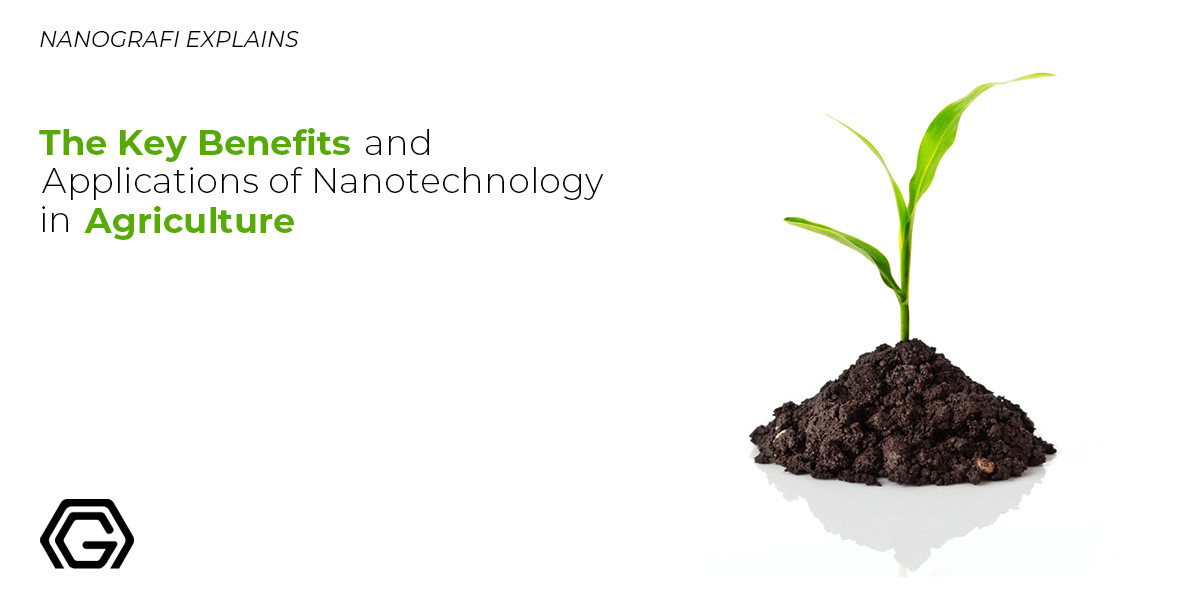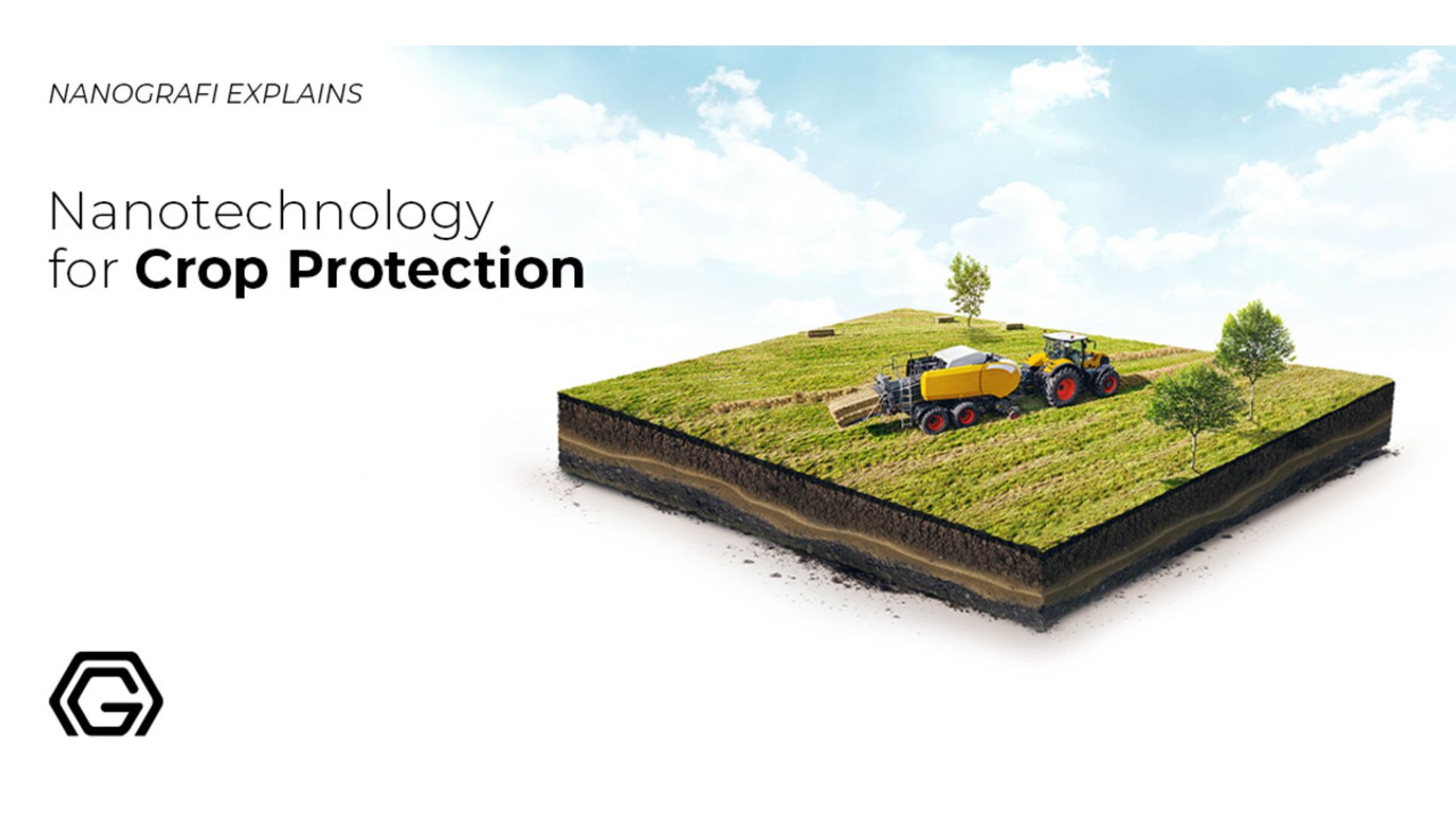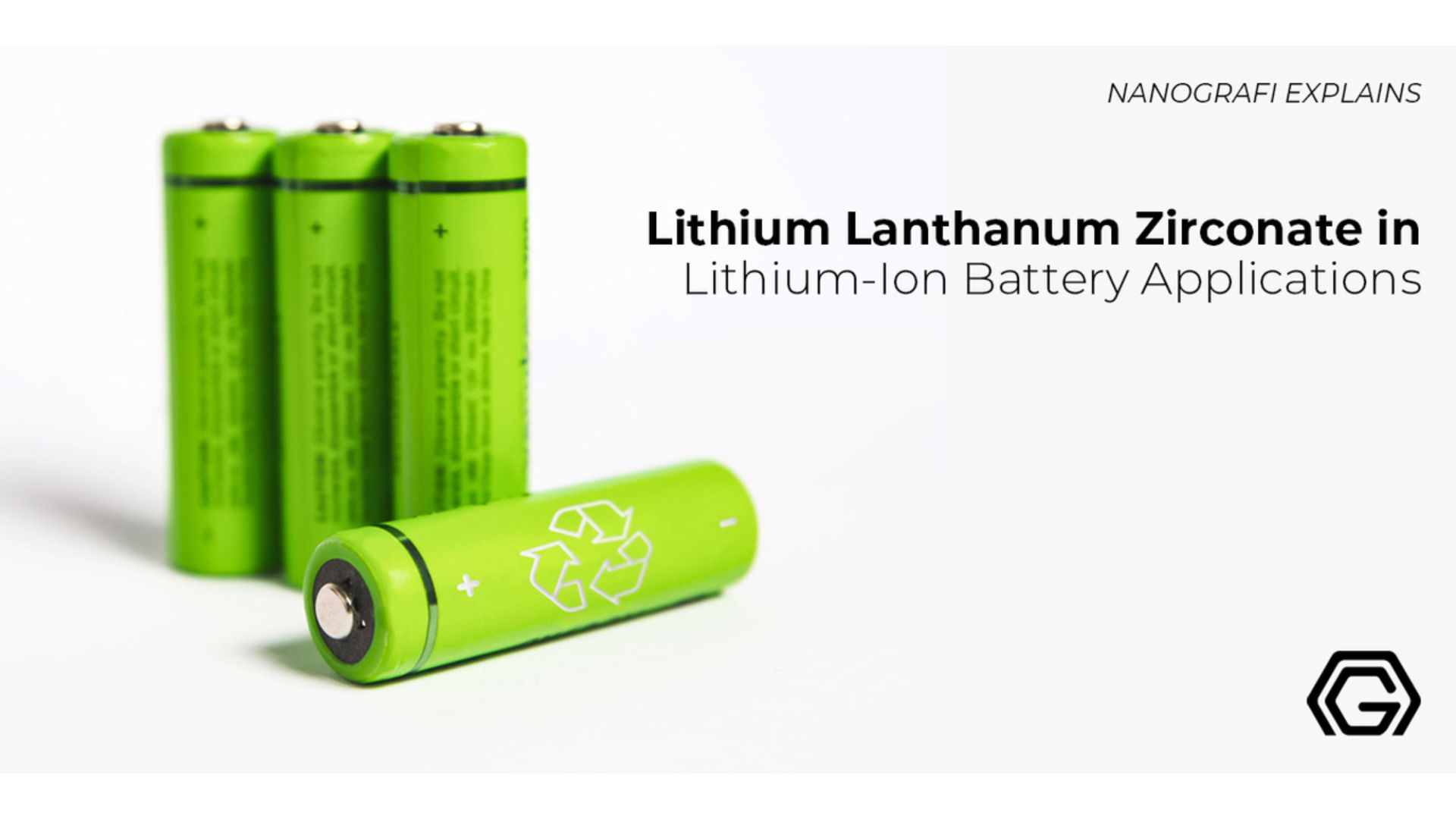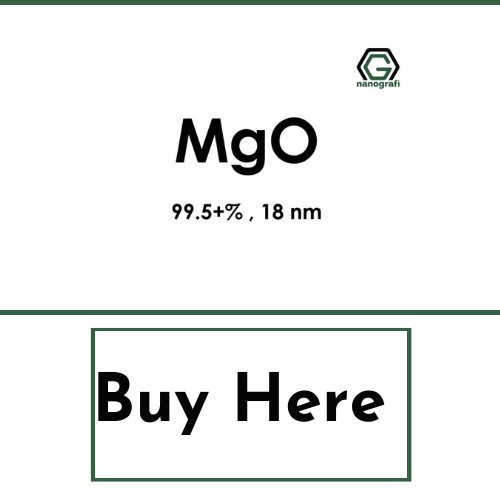The Key Benefits and Applications of Nanotechnology in Agriculture
Nanotechnology is the incorporation of matter in the production of advanced structures and various materials.
The particles involved in the incorporation of nanotechnology are the nanomaterials which are extremely small in shape and size that a naked eye is not enough to see them. Nanotechnology, owing to its great characteristics and properties has made a lot of advancements in various areas of human life but specifically and massively in the field of agriculture. All those key benefits are explained in this article which are promoting the advancements in the field of agriculture.
Introduction
Production of new devices, materials, and structures by manipulating matter on a near-atomic scale is nanotechnology. Scientific advancements are promised by technology in various sectors like manufacturing, materials, energy, consumer products, and medicine. Nanotechnology is for engineered systems, devices, and structures. A length scale of between 1-100 nanometers is possessed by the nanomaterials. Materials display excellent characteristics at this size, affecting biological, chemical, and physical behavior. These characteristics being properly researched, developed, and utilized are at the new technology's heart.
Characteristics of Nanotechnology
Naturally, nanotechnology is broad in size, including diverse scientific fields like molecular engineering, microfabrication, engineering, energy storage, semiconductor physics, molecular biology, organic chemistry, and surface science. There are equally diverse associated applications and researches, varying from the extensions of conventional device physics to the new approaches that are based on molecular self-assembly to develop the new materials with nanoscale dimensions for directing the matter’s control on the atomic scale.
The Future Implications of Nanotechnology
Nanotechnology's future implications are currently under debate by scientists. Nanotechnology can produce various new devices and materials with a broad number of applications, including consumer products, biomaterials energy production, nanoelectronics, and nanomedicine. Various similar issues have been raised by nanotechnology as any new technology, for instance, concerns about the nanomaterial's environmental impact and toxicity, and their possible effects on the global economics, along with the speculation about numerous scenarios. These concerns resulted in a debate among the governments on the warranty of nanotechnology's special regulation.
Fundamental Concepts
Engineering the functional systems at a molecular scale is known as nanotechnology. Both concepts and the current work are covered by these that are more advanced. Nanotechnology refers to the projected capability of constructing items from the bottom up, by utilizing tools and techniques that are being made today for making high-performance and complete products.
Scale Ranges
One is nanometer (nm) is 10-9 of a meter or one-billionth. The spacing between these atoms in a molecule or typical carbon-carbon bond lengths are in the 0.12-0.15 nm of range, and around 2 nm of diameter is possessed by a DNA double-helix. Whereas, the bacteria of the genus Mycoplasma, the smallest cellular life-forms are 200 nm in length. Following the definition that the National Technology Initiative in the US used, nanotechnology is taken as the scale range of 1-100 nm.
Upper and Lower Limits
The size of the atoms set the lower limit (the smallest atoms are possessed by hydrogen, which is almost a quarter of an nm kinetic diameter) as nanotechnology should make its devices from the molecules and atoms. The upper limit is more or less arbitrary and it is of usage in the nano device. Nanotechnology is made distinct by these new phenomena from devices that are rarely the miniaturized versions of an equivalent macroscopic device; these devices come under microtechnology and they come on a larger scale.
Nanometer’s Comparative Size
Nanometer's comparative size to a meter is similar to that of marble of the earth's size. A nanometer can be defined by the amount of beard that a normal nan grows from raising a razor to his face from the table.
Approaches to Nanotechnology
Two main approaches are utilized in nanotechnology. Devices and materials are built up from the molecular components in the "bottom-up" approach, which chemically assembles themselves by using molecular recognition principles. Nanoobjects are made without atomic-level control from larger entities in the "top-down" approach. During the last decades, there has been evolvement in the areas of physics like nanoionics, nanophotonics, nanomechanics, and nanoelectronics, for providing a basic scientific foundation for nanotechnology.
Nanomaterials
Subfields are included in the nanomaterials field which studies or develops materials that possess excellent characteristics arising from their nanoscale dimensions.
- Many materials have been given birth by the interface and colloid sciences that might be beneficial in nanotechnology, like the carbon nanotubes and the other fullerenes, and numerous nanorods and nanoparticles. Nanomaterials with fast ion transport are also related to nanoelectronics and nanoionics.
- One can also utilize the nanoscale materials for bulk applications, most of the nanotechnology’s current commercial applications are of this flavor.
- There has been progressing in utilizing nanomaterials for numerous medical applications, like biomedicine.
- Sometimes, nanoscale materials are utilized in solar cells as nanopillars that combat the traditional silicon solar cells' cost.
- There has been the development of applications that are using the semiconductor nanoparticles in the next generation of products, like quantum dots, biological imaging, solar cells, lighting, and display technology.
- Nanomaterial’s recent application includes biomedical applications like biosensors, antibacterials, drug delivery, and tissue engineering.
To get more information about the applications of nanotechnology in agriculture,
you can read our blog post here.
Nanotechnology in Agriculture
Good momentum has been gained by nanotechnology in the agriculture in last decade with a lot of public funding, but the developmental stage is good, even though various methods became under agriculture's umbrella. This can be because of a farm production's remarkable nature, functioning as an open system where there is a free exchange of matter and energy. The input materials' scale of demand has always been large in contrast with the industrial nanoproducts with the absence of control over the nanomaterials input in contrast with the industrial nano products. New delivery mechanisms and new agrochemical agents are provided by nanotechnology for improving crop productivity and it promises the reduction of pesticide applications.
Advantages of Nanotechnology in Agriculture
Nanotechnology can increase agricultural production, and the following are included in its applications:
- Postharvest management
- Poultry production, animal breeding, animal health.
- Plant disease diagnostics.
- Nanodevices for the plants’ genetic engineering.
- Nanosensors' application in crop protection to identify the diseases and residues of the agrochemicals.
- The nanoformulations of the agrochemicals to apply fertilizers and pesticides to improve crops.
Crop yields are also improved by precision farming techniques without damaging water and soil. Moreover, there can be less loss of nitrogen because of emissions, leaching, and soil microorganisms.
Inclusion of Applications
The nanotechnology applications include the DNA transfer or nanoparticle-mediated gene in the plants to develop insect-resistant varieties, food storage and processing, and improved product shelf life. The development of biomass-to-fuel production can be increased by nanotechnology. According to the experts, there needs to be a balance of nanotechnology's potential benefits for aquaculture, fisheries, food, and agriculture, against the concerns for the workers' occupational health, environment, water, and soil.
Latest Researches
Currently, there are ongoing researches and tests on the usage of nanotechnology, and in some cases, they have already been implemented in food technology. There have been considerations of the nanomaterials with particular mechanical, physical, and chemical characteristics. Recently, a huge amount of interest has been gained by the agricultural waste products as the source of renewable raw materials for being processed as an alternative to various applications and also the raw material for the production of nanomaterial. Right now, the most perfect example of the evolution in an ecological time scale is Insecticide resistance. There is a need of studying insecticide resistance as it results in understanding the mechanisms that are functioning in real-time and due to its economic significance. It is now a huge problem in insects for public health and agriculture.
Agricultural Practices of Nanotechnology
A broad amount of selective regimes can be included in agricultural practices. There have been tests of nanotechnology applications in agriculture and food technology. In agriculture, the nanomaterials' applications main purpose is the reduction of spraying of plant protection products and increasing plant yields. Nanotechnology means nanoparticles and nanocapsules are examples of their usages to treat and detect diseases. There has been an exploration of nanotechnology-derived devices in the plant breeding and genetic transformation field. Nanotechnology's potential is large in agriculture, whereas there needs to be addressing of some issues like risk assessment.
Nanoparticles’ Derivatives
There is a derivation of some of the nanoparticle attractants from the biopolymers like carbohydrates and proteins with less effect on the health of the environment and human beings. There are many usages of nanotechnology in all the stages of agricultural product production, processing, storing, packaging, and transport. The food industry and agriculture can be revolutionized by nanotechnology in farming techniques, improving the plant's capability of absorbing nutrients, detecting diseases, and controlling pests.
Nanotechnology in The Fertilizers and Pesticides
There is a need for Sustainable agriculture these days. Presenting the ecosystem's good approach for the long run might now be understood. Practices causing long-term soil damage include soil's excessive tilling resulting in irrigation and erosion with no need for drainage, leading to salinization. This is for satisfying the food of animals and human beings and the fiber needs.
Long-Term Experiments
There is a need for long-term experiments for demonstrating the impact of the different practices on the characteristics of the soil that are important for sustainability and for giving significant information on this objective. In the US, Nano chemicals development has become a promising pest control and plant growth agent. There is a requirement for fertilizers in the growth of plants. Nanomaterials function as fertilizers that may have the characteristics like crop enhancement and less eco-toxicity. A major way can be given by plants for their bioaccumulation into the food chain. For the chemicals to be safely and effectively used for plants, the latest developments in agriculture cover nanoparticle applications.
Effects
Several workers reported the effects of the different nanoparticles on phytotoxicity and plant growth including plant growth,magnetite (Fe3O4) nanoparticles, zinc, alumina, and zinc oxide on the seed germination and root growth of the five higher plant species; cucumber, corn, lettuce, rape, and radish, zinc oxide in mungbean, sulfur nanoparticles on tomato, silver nanoparticles and seedling growth in wheat, nanoparticles of ZnO, NiO, MnO, FeO, CuO, and AlO. Wheat Yield and growth can be stimulated by the silver nanoparticles. There are highly favorable growth-promoting effects of the soil-applied 25 ppm SNPs on the wheat yield and growth.
Zinc’s Usage
Zinc is an important micronutrient for various metabolic activities in the plants however it is needed in very little amounts in plants. According to the findings, a significant role is played by zinc in the management of the reactive oxygen species and protection of the plant cells against oxidative stresses. There are important purposes for zinc in synthesizing indoleacetic acid (IAA) or auxin from tryptophan and in the biochemical reactions that are needed to form carbohydrates and chlorophyll. Zn's deficiency can affect the crop yield and produced can's quality. There has been an increasing problem with the development of insecticide resistance in the pest insects for public health and agriculture.
Magnesium Oxide
MgO (magnesium oxide) is a significant inorganic material with various usages like photo electronic materials, toxic waste remediation, advanced ceramics, fire retardants, and adsorbents. Thus, there have been reports of the numerous routes and techniques to synthesize MgONPs. Green methods were used to synthesize the MgOH by utilizing the Citrus limon leaves extract, nontoxic neem leaves extract, and acacia gum.
If you are interested in the role of nanotechnology in lithium-ion battery applications,
you can read our blog post here.
Control of Plant Pests
In various countries, fusarium wilt is lettuce and tomato's destructive disease because of its extreme production loss, fungus' prolonged survival in the soil, and resistant races' generation. There can be a reduction of the disease to some extent with the utilization of resistant chemicals and cultivars. Although, the continuing complication is the development and occurrence of the latest pathogenic races, and the chemicals used are not always effective but always expensive. Nanomaterials usage has been an alternative solution for controlling plant pathogens in recent years. Magnesium oxide's (MgO) nanoparticles have been made by Ghidan et al. He also tested different concentrations' effects on the GPA (green peach aphid) under greenhouse conditions.
Nanomaterials’ Synthesis
There has been a successful synthesis of the nanomaterials of magnesium oxide (MgO), magnesium hydroxide (MgOH), zinc oxide (ZnO), and copper oxide (CuO), by utilizing the aqueous extracts of Chamaemelum Nobile flowers, Olea europaea leaves, and Punica granatum peels. According to the synthesized bio-nano particles screening, these nanoparticles were effective in increasing the green peach aphid's mortality percent. There was an analysis of the metal oxide nanoparticle accumulations in the green sweet pepper's leaves and fruits after the glasshouse experiments. According to the results, no plant fruits had any kind of metal accumulation.
The Eco-friendly Nanomaterials
Green methods and eco-friendly prepare the nanomaterials that may increase the agriculture potential to enhance pesticides, plant growth, and the process of fertilization. The amount of dangerous chemicals that are polluting the environment is also minimized by this technology. The key pest on a peach is considered to be the green peach aphid and is also considered a globally important pest of a wide range of horticultural and arable crops, like Jordan. In the world, the most significant agricultural pest is the pest. This devastating pest overproduces the insecticide-degrading carboxyl esterases to combat the organophosphorus and carbamate insecticides. Also, it is now extremely difficult to control such a pest, as there is more production of resistance for the aphid individuals when utilizing chemical insecticides like pyrethroids, organophosphates, and carbamates.
Chemical and Physical Methods
Different chemical and physical methods were used to synthesize the nanomaterials like magnesium oxide (MgONPs), magnesium hydroxide (MgOHNPs), zinc oxide (ZnONPs), and copper oxide (CuONPs). With the growing need to minimize the use of environmental-risk substances, like insecticides, nanoparticles biosynthesis has gained increasing interest as a rising highlight of biotechnology and nanotechnology. In comparison to the microorganisms, the metal ions rate of reduction using the plants has been way faster, and there are reports of the stable production of the nanoparticles.
Antimicrobial Activity
In food packaging, various nanomaterials are utilized as antimicrobial agents in which there is a great interest possessed by the silver nanoparticles, and all of this is because of its prolonged usage. Silver, gold, magnesium oxide (MgO), silicon oxide (SiO2), zinc oxide (ZnO), and titanium dioxide (TiO2) are some other nanoparticles that are currently being utilized. Particular functions and properties are possessed by all of them, for instance, antifungal and antimicrobial activity is shown by the zinc nanocrystal. Russian Space Station and NASA used silver as a sterilizing agent and disinfectant for silver, silver zeolite, and water. Good antimicrobial and antifungal effects, low volatility, and high-temperature stability are possessed by gold against 159 different kinds of bacteria. In 2009, FDA approved silver's direct usage in commercial water as a disinfectant as there were effective and efficient results shown against the microorganisms.
Antifungal Activities
Similar results were provided by the nanosilver particles coated with cellulose acetate phthalate, Staphylococcus aureus, L. monocytogenes, and E. coli’s antimicrobial effect. Antifungal activity is shown by some of the nanoparticles. Yeast, Aspergillus Niger, and Candida albicans are included in these fungi. AgNPs are also effective against the methicillin-resistant Staphylococcus aureus. Antimicrobial properties like titanium oxide (TiO2) are also possessed by nanoparticles other than silver. It has an obvious antimicrobial activity in UV light. Antimicrobial activity is possessed by the Zinc oxide in packaging material.
Applications of Nanotechnology as Nanofungicides
Recently, there have been studies on the nanosilver’s usage against phytopathogen Colletotrichum gloeosporioides. There have also been reports of the other nanoparticles (carbon nanotubes, Al2O3, CeO2, TiO2, ZnO, Zn, Al, Si, Cu, and Fe) having some bad effects on plant growth other than the antimicrobial characteristics. An effect is possessed by the nanoparticles at times on the growth of the beneficial soil bacteria, like Pseudomonas putida KT2440. The focus of several research groups was on the utilization of eco-friendly pesticides. There has been an exploration of the herbicides and nanoparticle-based pesticides like chemical pesticides for the application of antimicrobial agents for protecting the crops from numerous diseases.
Nanoparticle-based pesticides can be formulated with the help of the nanoparticles' antifungal characteristics. Various researchers have broadly studied silver among the different inorganic nanoparticle-based antimicrobial agents, due to its various advantages over other nanoparticles like TiO2, Al2O3, ZnO, gold, zinc, and copper.
Inhibitory Effect
Nickel nanoparticles possess the same inhibitory effects in a liquid medium and solid media. The mycelial growth and surface areas acting on the Fusarium's mycelia can be majorly increased by utilizing the Ni nanoparticle solution.
Nanotechnology for Controlling Plant Virus
The naturally occurring nanomaterials in plant viruses are the spherical virus in particular. Satellite tobacco necrosis viruses are yet the smallest plant viruses that are known and they are only 18 nanometers in diameter. Double or single-stranded DNA/RNA as genome encapsulated by a protein coat, makes up the plant viruses. Their capability of infecting, and delivering the nucleic acid genome in the host cell to a particular site, replicating, and packaging the nucleic acid, and coming out of the host cell in a precise and orderly manner, makes it compulsory for them to be utilized in the nanotechnology. Young et al. recently did a review on using plant viruses as the bio templates for the nanomaterials and their usages.
Nanotechnology in Food Packaging
There is a lead taken by the food industries in making good nutritive value food. For instance, they utilize high impermeable packaging nanomaterials to protect food from UV radiations and offer more strength for maintaining the protected food from the environment, thus improving and prolonging their shelf lives. Nanosensors are utilized to detect pathogens, gases, and chemicals, in food. Such type of packaging is often known as smart packaging in modern terminology. According to some of the studies, it is because of some of the risk factors that nanoparticles' direct involvement in food is not accepted by people. Thus, some safety measures should be provided for lessening human safety and risk.
Conclusion
Nanotechnology has made a lot of advancements over the past decades and fairly in the field of agriculture. They have initiated new concepts of how our fields, crops, plants, and fruits can be protected and their growth can be maximized at a greater level. The research carried out in this regard has massively proved beneficial against the agenda that it began for which was bringing advancements in the field of agriculture.
To get more information, you can visit Blografi.
References
https://www.intechopen.com/chapters/68970
https://www.ncbi.nlm.nih.gov/pmc/articles/PMC5476687/#:~:text=Nanotechnology%20monitors%20a%20leading%20agricultural,nutrients%20from%20the%20soil%2C%20etc.
https://www.azonano.com/article.aspx?ArticleID=3141
https://www.researchgate.net/publication/349463013_Advantages_of_Nanotechnology_in_Agriculture
https://www.sciencedirect.com/science/article/pii/S2405844021026426
Recent Posts
-
Turning Noise into Power: Energy Harvesting with Piezoelectric Nanogenerators
Ambient acoustic energy, once an untapped resource, is now being converted into sustainable electric …5th Mar 2025 -
Holey Super Graphene in Li-ion Batteries: Next Generation of Energy Storage
Holey Super Graphene (hG), also referred to as “holey graphene,” is redefining li-ion ba …7th Feb 2025 -
Future Communication with 5G Technology and Advanced Materials
5G technology opens the doors to a new era in communication with faster connection speeds, low laten …6th Feb 2025








